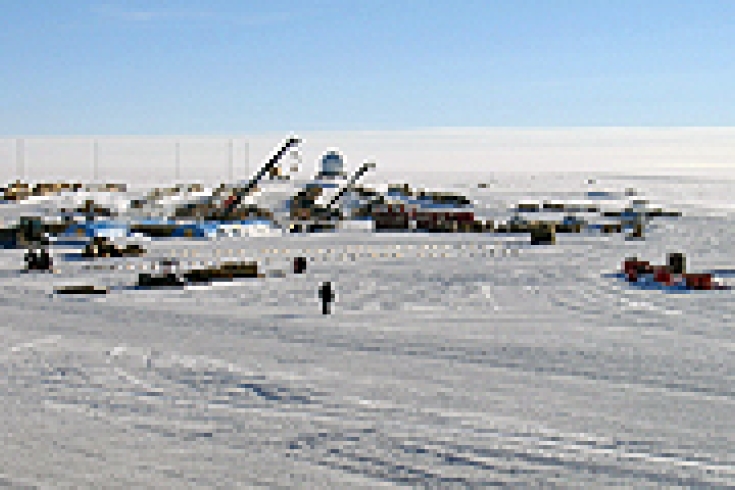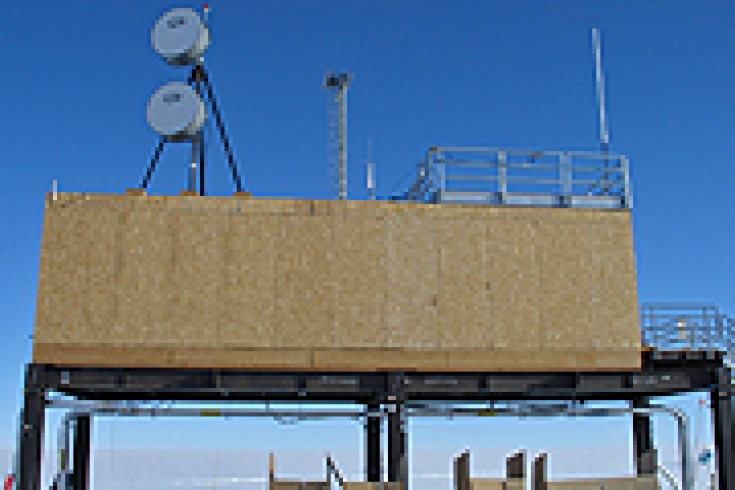Communicating with the South Pole

C130 Hercules planes keep their engines running between landing and take-off at the South Pole to prevent the engines from icing over.

CTBTO Communications Officer Allan Gray at the Geographical South Pole.

The Amundsen-Scott South Pole Station is located at 90° south.

The white dome houses the installations for the Intelsat communication.

The antenna in the middle on the roof of this building is part of the Iridium communication set-up.
31 Mar 2008
